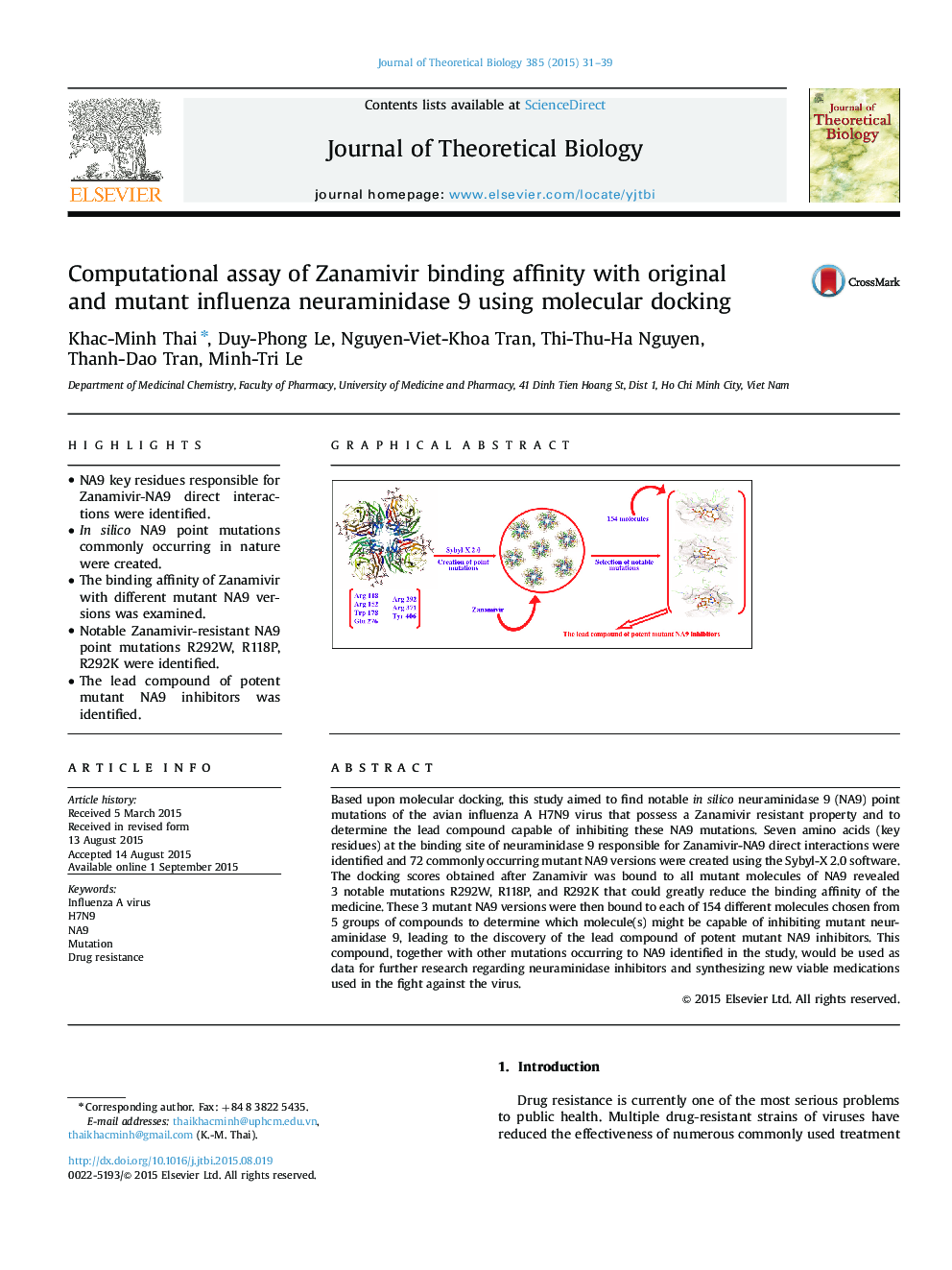| Article ID | Journal | Published Year | Pages | File Type |
|---|---|---|---|---|
| 6369463 | Journal of Theoretical Biology | 2015 | 9 Pages |
â¢NA9 key residues responsible for Zanamivir-NA9 direct interactions were identified.â¢In silico NA9 point mutations commonly occurring in nature were created.â¢The binding affinity of Zanamivir with different mutant NA9 versions was examined.â¢Notable Zanamivir-resistant NA9 point mutations R292W, R118P, R292K were identified.â¢The lead compound of potent mutant NA9 inhibitors was identified.
Based upon molecular docking, this study aimed to find notable in silico neuraminidase 9 (NA9) point mutations of the avian influenza A H7N9 virus that possess a Zanamivir resistant property and to determine the lead compound capable of inhibiting these NA9 mutations. Seven amino acids (key residues) at the binding site of neuraminidase 9 responsible for Zanamivir-NA9 direct interactions were identified and 72 commonly occurring mutant NA9 versions were created using the Sybyl-X 2.0 software. The docking scores obtained after Zanamivir was bound to all mutant molecules of NA9 revealed 3 notable mutations R292W, R118P, and R292K that could greatly reduce the binding affinity of the medicine. These 3 mutant NA9 versions were then bound to each of 154 different molecules chosen from 5 groups of compounds to determine which molecule(s) might be capable of inhibiting mutant neuraminidase 9, leading to the discovery of the lead compound of potent mutant NA9 inhibitors. This compound, together with other mutations occurring to NA9 identified in the study, would be used as data for further research regarding neuraminidase inhibitors and synthesizing new viable medications used in the fight against the virus.
Graphical abstractDownload full-size image
